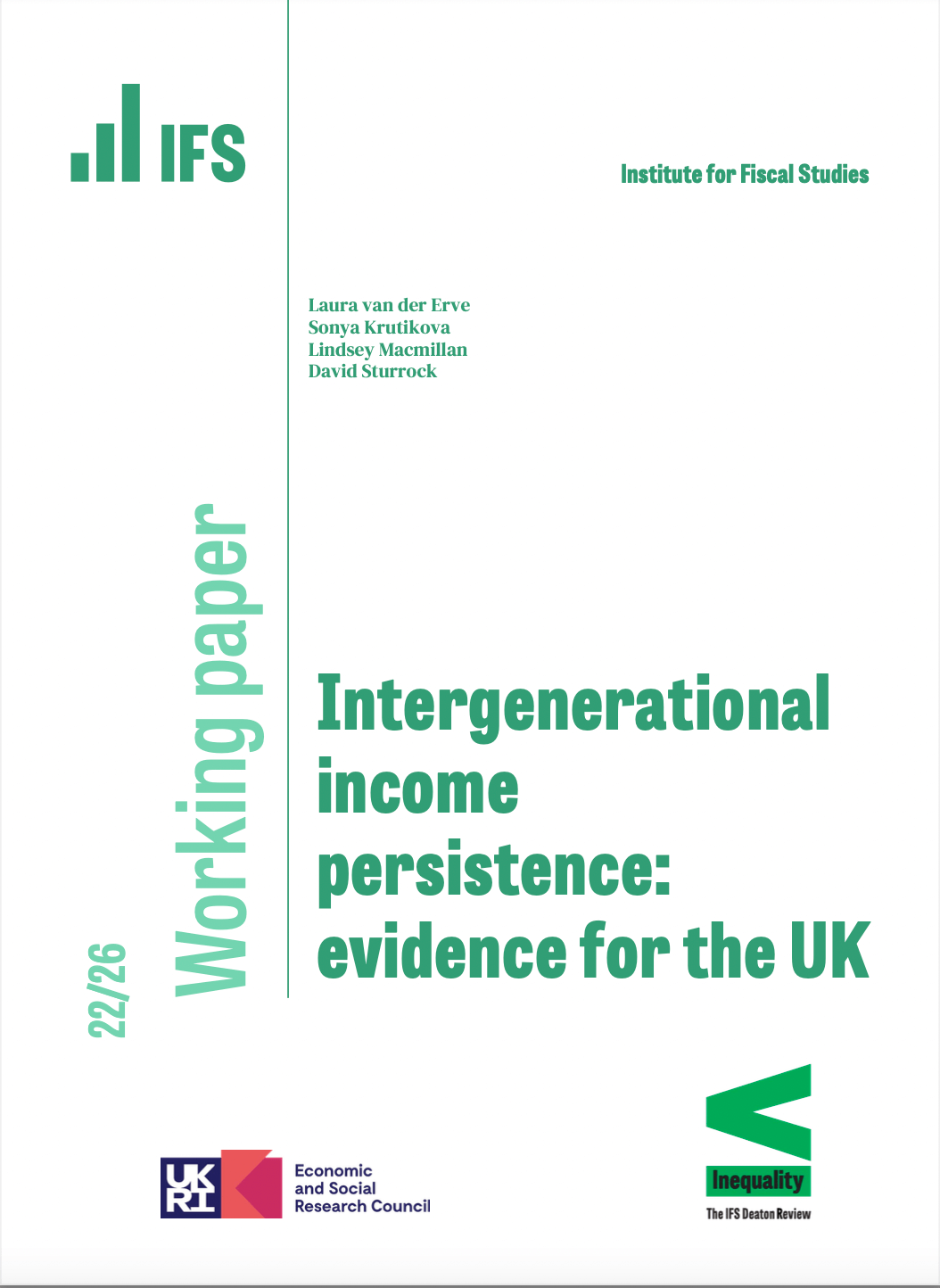
Summary
Intergenerational mobility is a subject of a large literature in social science. It focuses on the association between parents’ and children’s economic wellbeing and receives significant attention because it speaks to the question of equality of opportunity (Torche, 2015), which many consider an important goal for society. Intergenerational mobility is a cross-cutting theme in the Deaton Review, which is touched upon in several of the core chapters, including on education, early childhood and race & ethnicity. Therefore, our aim is not to provide a comprehensive overview of this topic but rather to spotlight some of the newer directions in intergenerational mobility research within economics driven by changes in some key trends in the recent decades as well as growing availability of administrative data.
We start by providing an overview of the different ways in which intergenerational mobility has been measured, including the transmission across generations of class, occupation, education, joblessness and welfare receipt. We then narrow our focus to earned income-based measures of intergenerational mobility, which dominate the economics literature in this area, review existing evidence for the UK and present some new estimates using novel administrative data. The remainder of the paper focuses on considering the two important ways in which these estimates paint an incomplete picture of intergenerational mobility trends, beyond the well-documented concerns about measurement of earned-income. These include within country heterogeneity as well as the role of unearned income.
Until recently intergenerational mobility literature in focused on studying national trends and drawing lessons on drivers from international comparisons. Recent studies have started to show, however, that the national picture masks important and informative differences in experiences of people within countries (Chetty et al, 2014; Li&Heath, 2016). Recognising, documenting and understanding these differences is relevant in and of itself and may help uncover a richer understanding of drivers of social mobility. The ability to study within country heterogeneity in intergenerational mobility in the UK context has been greatly boosted by newly available administrative data. We summarise the handful of existing studies on this topic for the UK and present new evidence using these administrative data. We demonstrate the high degree of heterogeneity in earnings mobility which exists between individuals living in different parts of the country masked by national estimates.
Another dominant feature of the intergenrational mobility literature in economics is its focus on earned income, making the assumption that it is a good proxy for lifetime total income and ignoring sources of income other than earnings – including capital incomes and intergenerational wealth transfers received – which we refer to as “unearned income”. This may be due to the fact that these sources of were relatively less important in past decades. It may also reflect the fact that they are less widely and less well recorded in standard economic datasets. High quality data containing information on these outcomes which is also linked across generations is rare. In light of the dramatic rise in private wealth to income ratios observed over the last 50 years across many advanced economies, however, a focus on earned income alone may increasingly be missing an important part of the picture. In the UK, household wealth compared to national income has more than doubled over that period (Bangham and Leslie, 2020). This growing size of wealth has come alongside a growth in the capital share of income and the size of intergenerational wealth transfers as a share of national income (Alvaredo et al, 2017). In this paper we, therefore, explicitly consider unearned sources of income, namely returns to wealth and wealth transfers received, as potentially important parts of total income. We do this by examining the data that is available on these outcomes, albeit limited, by considering persistence in wealth as potentially informative about the persistence in a wider measure of income, and by making simulations of the impact of intergenerational wealth transfers on lifetime income mobility.
Clearly, the interpretation of the trends we document and the role for policy depends crucially on the mechanisms underlying the observed associations and differences between groups. We overview the large literature which considers the role of education as a driver of earned income mobility and provide some new estimates, leveraging high quality administrative data on pupil attainment at different points in their schooling, on the mediating power of education in the national estimates as well as in explaining differences across groups within England. We then consider what patterns of heterogeneity in earned income mobility across groups may be able to tell us about a wider set of drivers of intergenerational mobility beyond education. Turning to drivers of unearned income persistence, we consider the role of intergenerational wealth transfers and returns to wealth. This analysis clearly demonstrates that drivers beyond earned income, including inheritance, are playing an increasingly important role in driving persistence of lifetime income across generations. This suggests that in the current context a focus on earned income mobility and its drivers is not enough to paint a complete picture of intergenerational persistence in lifetime income. Before concluding, we present a simulation exercise which demonstrates this.
In our conclusion we discuss policy implications and directions for future research.